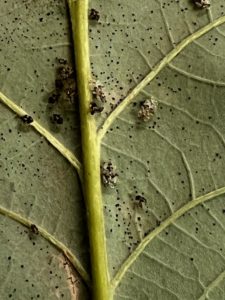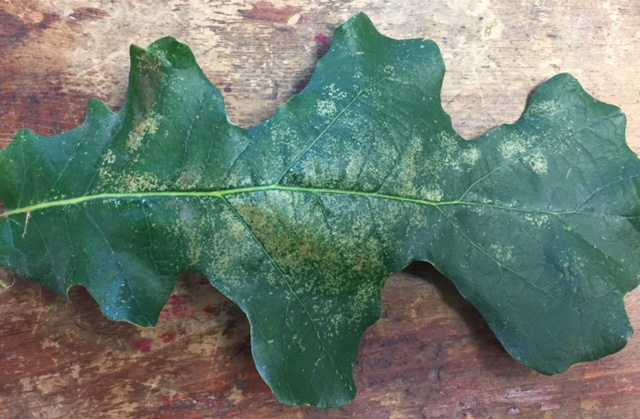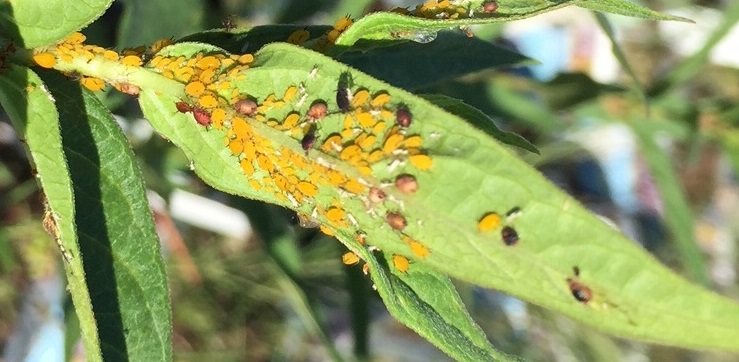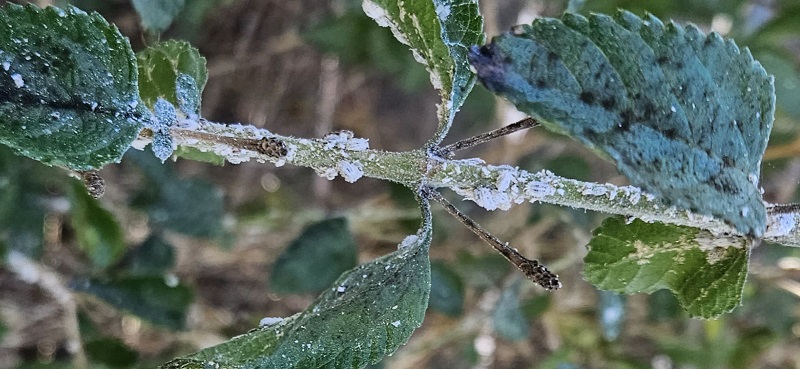
There are many species of Lace bugs that can become abundant on certain host plants in certain years. (Do not confuse these with “LaceWINGS”, which are bright green, winged beneficial insects. Lacewing larvae eat aphids!) This year we have seen the destructive pest, Lacebug, on Texas Persimmon, Lantana and Elm trees. Watch for them on Azalea, Texas Sage, Pyracantha, Redbud, Bur Oak and Sycamore as well.

Adult lace bugs are 1/8” to ¼” long and appear flattened. The wings are lace-like, and appear clear. Usually a plant infested with Lacebugs will have nymphs, cast-off skins, eggs and adults on the leaves at the same time. The upper surface of the leaf will appear flecked with white or yellow from the feeding of the insect. The underside of the leaf will have black varnish-like specks, which are the excrement of the insect.
These insects overwinter as adults in the crevices of the host plant’s bark or as eggs laid along the midrib of the underside of the leaf. When the adults emerge in the spring, they glue their eggs to the undersides of leaves. Nymphs hatch from the eggs and go through five instars in about 30 days before becoming adults. Three to five generations can be produced each year.

Since these insects can defoliate plants if severely infested, it is best to approach control from two directions. If infestations have been severe in the past, Horticultural oil should be sprayed thoroughly on the dormant plant in January or February. This will suffocate any overwintering adults.
In the spring and summer, once the insects are spotted on the backs of the leaves, an insecticide labeled for use for Lace bugs should be used as directed. (Please consult our staff for recommendations, as most products should not be used in high temperatures) If Lantana become unsightly in late summer from the feeding of the Lace bug, cut them back severely, then spray (if not too hot) as the new growth comes out to prevent re-infestation. They will be pretty and blooming again in no time. Watch your Bur Oaks in mid to late summer for signs of infestation, and try to treat before the tree is defoliated, again, if it is not too hot. A tree can survive one or two years of defoliation, but it is recommended to treat trees that have had severe infestations in the past.
For more information and photos on Lace Bug damage on Lantanas, CLICK HERE.




